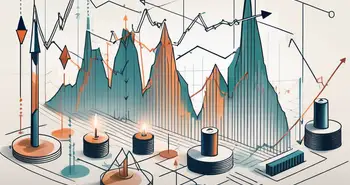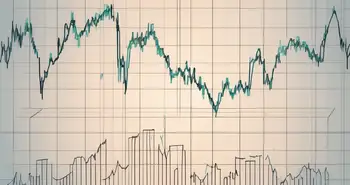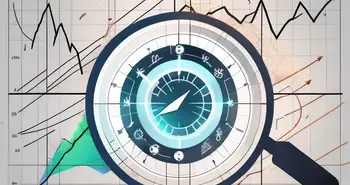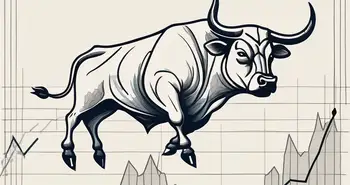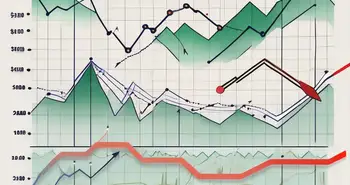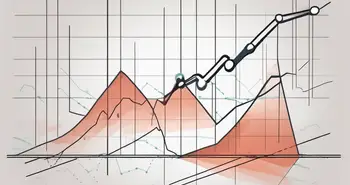Understanding the Arms Index: A Comprehensive Guide to Market Analysis
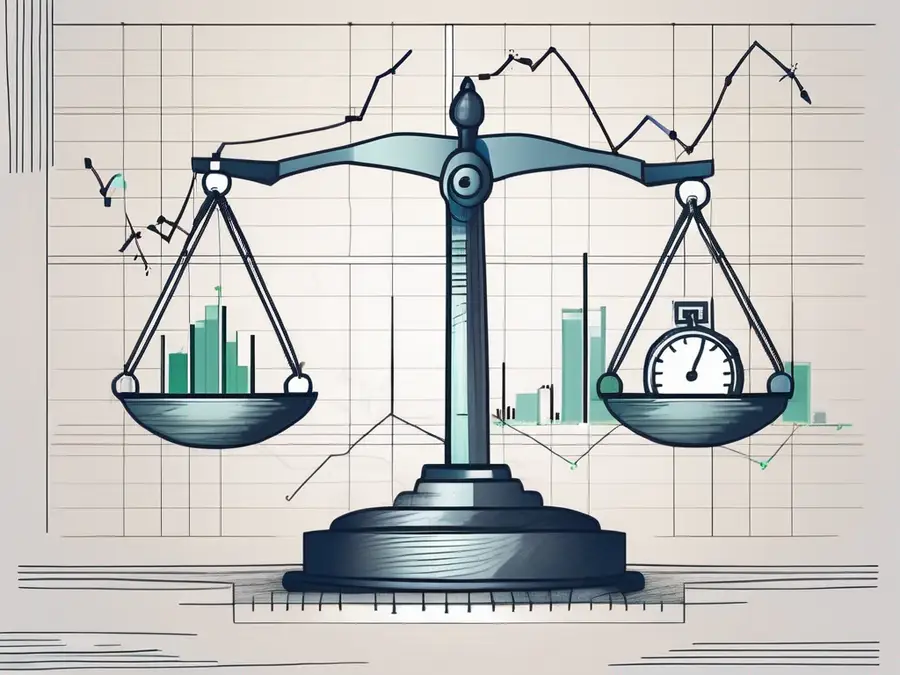
In the fast-paced world of stock markets, having a comprehensive understanding of market analysis tools is crucial. One such tool that has gained popularity among traders and analysts is the Arms Index, also known as the TRIN (Trading Index). In this article, I will provide a detailed guide on understanding the Arms Index and its significance in market analysis. Whether you are a seasoned trader or a novice investor, this comprehensive guide will equip you with the knowledge needed to navigate the volatile market with confidence.
What is the Arms Index?
The Arms Index, developed by Richard Arms in the 1960s, is a technical indicator that measures market breadth and price movements. It helps traders assess the strength and direction of market trends by taking into account the relationship between advancing and declining stocks and the volume associated with each. By providing valuable insights into the supply and demand dynamics of the market, the Arms Index is a powerful tool for market analysis.
The Concept and Calculation of the Arms Index
At its core, the Arms Index is based on the principle that a market with more advancing stocks than declining stocks indicates bullish sentiment, while the opposite suggests bearish sentiment. To calculate the Arms Index, the ratio of advancing stocks to declining stocks is divided by the ratio of advancing volume to declining volume. A value above one indicates bearish sentiment, while a value below one signifies bullish sentiment.
Importance of the Arms Index in Market Analysis
The Arms Index is highly regarded by traders and analysts as it provides a unique perspective on market breadth and the balance of power between buyers and sellers. By analyzing the Arms Index, market participants can gain valuable insights into the overall health of the market and make informed trading decisions based on prevailing sentiment. Moreover, the Arms Index can help identify potential market reversals before other indicators confirm the change in direction.
The Arms Index and Market Trends
Understanding market trends is a fundamental aspect of successful trading. The Arms Index can be a valuable tool in deciphering both bullish and bearish signals within the market.
Interpreting Bullish Signals with the Arms Index
When the Arms Index generates a reading below 0.70, it suggests that the market is in a bullish phase. This indicates that the buying activity is strong relative to selling activity, pointing to a potentially favorable market trend. Traders can use this information to time their entry into the market or to strengthen their existing positions.
Deciphering Bearish Indicators through the Arms Index
On the other hand, when the Arms Index registers a reading above 1.30, it indicates bearish sentiment in the market. In this scenario, selling pressure outweighs buying pressure, which could suggest a potential market downturn. Traders can use this insight to consider taking profits on existing positions or to initiate short positions to capitalize on the anticipated downward movement.
The Arms Index and Volatility
Market volatility can have a significant impact on trading decisions. The Arms Index can help traders measure and assess market volatility, providing insights into potential market stability or instability.
How the Arms Index Measures Market Volatility
When the market experiences heightened volatility, the Arms Index tends to spike. A higher value indicates increased volatility as fear and uncertainty grip the market participants. Traders can monitor the Arms Index to gauge the intensity of market volatility, which can aid in adjusting trading strategies accordingly.
The Relationship between the Arms Index and Market Stability
The Arms Index can also provide insights into market stability. When the Arms Index hovers around or below the neutral level of 1.0, it suggests a relatively stable market environment. However, when the Arms Index veers significantly above or below the neutral level, it indicates potential market instability or an impending trend reversal, prompting traders to exercise caution and adjust their trading strategies accordingly.
Using the Arms Index for Trading Decisions
Integrating the Arms Index into your trading strategy can enhance your decision-making process and increase your chances of success in the market.
Incorporating the Arms Index into Your Trading Strategy
When incorporating the Arms Index into your trading strategy, it is crucial to take a holistic approach. Consider combining the Arms Index with other technical indicators or price patterns to validate your analysis. By using multiple indicators in conjunction with the Arms Index, you can strengthen your market analysis and increase the probability of making profitable trades.
As an expert trader, I can share a personal story illustrating the power of the Arms Index in my own trading journey. One day, while analyzing the Arms Index, I noticed a significant spike above 1.30. This signaled a bearish sentiment in the market, prompting me to reevaluate my positions. Subsequently, I adjusted my strategies and exited certain positions, saving myself from potential losses when the market experienced a sharp downturn. This experience demonstrated the importance of the Arms Index in identifying potential market reversals and protecting my capital.
Limitations and Risks of Relying on the Arms Index
While the Arms Index is a valuable tool, it is important to acknowledge its limitations and risks. Like any indicator, the Arms Index is not infallible and may generate false signals from time to time. Additionally, relying solely on the Arms Index without considering other market factors could lead to suboptimal trading decisions. Therefore, it is essential to use the Arms Index in conjunction with other indicators and analysis techniques to mitigate risks and increase the probability of successful trades.
The Arms Index in Different Market Conditions
The Arms Index is a versatile tool that can be used to analyze market trends in different conditions, including rising and falling markets.
The Role of the Arms Index in a Rising Market
In a rising market, the Arms Index can be used to assess the strength and sustainability of the upward trend. A consistently low Arms Index value suggests healthy market breadth, indicating that the bullish sentiment is widespread. Traders can use this information to position themselves in alignment with the prevailing uptrend and capitalize on potential opportunities.
The Function of the Arms Index in a Falling Market
During a falling market, the Arms Index can provide insights into the intensity of the downward pressure. As the market declines, an increasing Arms Index value reflects growing selling pressure and suggests further downside potential. Traders can utilize this information to mitigate risk by reducing their exposure to the market or by capitalizing on short-selling opportunities.
FAQ
1. What is the Arms Index?
The Arms Index, also known as the TRIN (Trading Index), is a technical indicator that measures market breadth and price movements. It helps traders assess the strength and direction of market trends by considering the relationship between advancing and declining stocks and their associated volumes.
2. How does the Arms Index calculate market sentiment?
The Arms Index calculates market sentiment by dividing the ratio of advancing stocks to declining stocks by the ratio of advancing volume to declining volume. A value above one indicates bearish sentiment, while a value below one suggests bullish sentiment.
3. How can the Arms Index be used for trading decisions?
The Arms Index can be incorporated into trading strategies to enhance decision-making. Traders can interpret bullish signals when the Arms Index registers a reading below 0.70 and bearish signals when it exceeds 1.30. Additionally, the Arms Index provides insights into market volatility and stability, empowering traders to adjust their strategies accordingly.
4. What are the limitations of relying solely on the Arms Index?
While the Arms Index is a valuable tool, it is not without limitations. False signals may occur, and relying solely on the Arms Index without considering other market factors can be risky. To mitigate such risks, traders should use the Arms Index in conjunction with other indicators and analysis techniques.
By equipping yourself with a thorough understanding of the Arms Index, you can enhance your market analysis skills and make more informed trading decisions. Remember, the Arms Index is just one tool in your arsenal, but when used in combination with other indicators and careful analysis, it can provide valuable insights into market trends and potential reversals.
Now that you're equipped with the insights of the Arms Index and ready to take on the markets, why not elevate your trading experience with Morpher? As a platform that's reshaping the investment landscape, Morpher.com offers you the flexibility to trade a variety of asset classes with zero fees and infinite liquidity. Whether you're looking to invest fractionally or take advantage of falling markets through short selling, Morpher's revolutionary blockchain technology has got you covered. Embrace the security of a non-custodial wallet, the power of 10x leverage, and the innovation of Virtual Futures. Sign Up and Get Your Free Sign Up Bonus today to join the future of trading with Morpher.

Disclaimer: All investments involve risk, and the past performance of a security, industry, sector, market, financial product, trading strategy, or individual’s trading does not guarantee future results or returns. Investors are fully responsible for any investment decisions they make. Such decisions should be based solely on an evaluation of their financial circumstances, investment objectives, risk tolerance, and liquidity needs. This post does not constitute investment advice.

Painless trading for everyone
Hundreds of markets all in one place - Apple, Bitcoin, Gold, Watches, NFTs, Sneakers and so much more.

Painless trading for everyone
Hundreds of markets all in one place - Apple, Bitcoin, Gold, Watches, NFTs, Sneakers and so much more.

